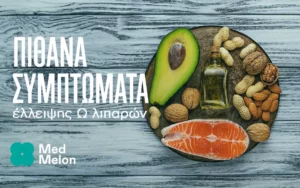Scientific Names of Hawthorn Leaf:
Crataegus monogyna Jaquin emend. Lindman, C. laevigata (Poiret) de Candolle and/or other Crataegus species [Fam. Rosaceae]
Forms:
Dried hawthorn leaf; Hawthorn leaf standardized extract
Traditional Usage:
– Anti-aging Tonic
– Antioxidant
– Antispasmodic
– Circulatory Disorders
– Cholesterol
– Digestive Disorders
– Edema
– Free Radical Related Diseases
– Insomnia
– Lowering LDL Cholesterol
– Nervous Disorders
– Sedative
– Swollen Ankles
– Tonic Herb
– Vascular Disorders
– Water Retention
Overview:
Hawthorn leaf, as an herbal drug, consists of the dried leaves of Crataegus species [Fam. Rosaceae] listed in valid pharmacopoeias or their preparations. The genus Crataegus includes approximately 280 different species of shrubs and small trees native to North America, Europe and Asia. Similar to European hawthorn leaves, research shows that the main constituents of the leaves of Crataegus scabrifolia, popular in Chinese medicine, are flavonoids. Six compounds obtained were identified as rutin, hyperoside, vitexin, ursolic acid, daucosterol, and nonacosanol. The Greek herbalist, Dioscorides, first reported the curative properties of hawthorn for the heart all the way back in the first century. Today, hawthorn is one of the most popular herbal medications in central Europe. Hawthorn leaf is generally used with hawthorn flower for the treatment of vascular disorders and is not officially recognized in Germany alone. Animal studies show that hawthorn reduces sudden death from vascular disorders. Many clinical and pharmacological studies have shown that hawthorn tonics can dilate coronary arteries thus improving the heart’s blood supply. The efficacy of a standardized hawthorn leaf and flower extract was tested in a 24-week multicenter study with 1,011 patients suffering from NYHA stage II (New York Heart Association) vascular disorders. Participants noted significant reductions in: fatigue, palpitation, exercise dyspnea, ankle edema (83%) and nighttime urination (50%). Almost 2/3 of the patients felt better or much better following the 24 weeks of treatment. More than 3/4 of the participating physicians noted a good or a very good efficacy, and 98.7% noted a good or a very good tolerance. Another clinical study with 132 stage II vascular disorder patients comparing a hawthorn leaf and flower extract (900mg per day of extract) to an adequate low dosage of the conventional drug captopril showed no significant differences between the hawthorn treatment and the conventional drug.
Active Ingredients:
Hawthorn leaf contains: acantolic acid; acetyl-choline; adenine; adenosine; amygdalin; ascorbic acid; caffeic acid; catechin-tannins; chlorogenic acid; choline; crataegolic acid; trans-cratagolic acid; dimethylamine; epicatechin; ethanolamine; ethylamine; guanine; heptahydroxyflavanbioside; isoamylamine; isobutylamide; proanthocyanidins; neoategolic acid; nonacosan-10-ol; pectin; quercetin-3-rhamnogalactoside; quercitrin; rutin; beta-sitosterol; daucosterol; sorbitol; trimethylamine; uric acid; ursolic acid; vitexin-4′-rhamno-D-glucoside; vitexin-4′,L-Di-D-glucoside. Preparations are especially rich in antioxidant flavonoids including hyperoside, vitexin-rhamnose, rutin, vitexin, and oligomeric proanthocyanidins (OPCs). [Source: James A. Duke 1992. Phytochemical Constituents of GRAS Herbs and Other Economic Plants. CRC Press, Boca Raton, FL]. Note: Procyanidins, the most common class of condensed proanthocyanidins, consist of chains of catechin and/or epicatechin units linked by 4-8 or 4-6 bonds.
Suggested Amount:
The recommended dosage for hawthorn leaf is based on dosage requirements for leaf and flower preparations. Standardized dry extracts of hawthorn leaf with flower are taken with a daily dosage of between 160-900mg taken in two or three individual doses. This dosage corresponds to 30-170mg procyanidins, calculated as epicatechin, or 3.5-20mg flavonoids, calculated as hyperoside. Fluid extracts and tinctures of hawthorn leaf and flower are taken accordingly. Even with a low dosage, corresponding to 1.6g of hawthorn (15mg of flavone-C-glycosides and 28mg procyanidins), significant improvements in exercise capacity, reduced breathlessness and reduced plasma cholesterol levels have been seen in clinical trials. Brand name hawthorn extracts may also provide dosage recommendations based on standardized levels of active ingredients based on human clinical trials.
Drug Interactions:
Hawthorn extracts have significant cardiovascular effects and therefore may affect existing therapies such as for hypertension, hypotension and cardiac disorders. Hawthorn extracts should not be used to replace existing therapies for cardiovascular disease, unless under the supervision of a qualified medical doctor.
Contraindications:
Hawthorn extracts have significant cardiovascular effects and therefore may affect existing therapies such as for hypertension, hypotension and cardiac disorders. Seek the advice of a qualified medical practitioner before taking hawthorn products in these cases. Hawthorn extracts may have uteroactivity and therefore should not be taken during pregnancy or lactation.
Side Effects:
When taken accordingly, hawthorn is ideal for long-term use as it generally produces no side effects and has no known toxicity. The minor rare side effects reported in clinical trials using commercial preparations of hawthorn have included nausea, fatigue, sweating and rash on the hands. Fourteen side effects were noted. In two cases (abdominal discomfort and facial pains accompanied by tachycardia) a possible relationship with the hawthorn therapy was postulated, which however, was considered unlikely by the treating physicians.
References:
Blumenthal M, Goldberg A, Brinckmann J 2000. Herbal Medicine: Expanded Commission E Monographs. Copyright American Botanical Council. Publ. by Integrative Medicine Communications, 1029 Chestnut Street, Newton, MA 02464. Pp. 182-192.
Si J, Gao G, Chen D. 1998. [Chemical constituents of the leaves of Crataegus scabrifolia (Franch.) Rehd]. Zhongguo Zhong Yao Za Zhi. 1998 Jul;23(7):422-3, 448. Chinese.
Tauchert M; Ploch M; Hubner W-D. 1994. Effectiveness of hawthorn extract LI 132
compared with the ACE inhibitor Captopril: Multicentre double-blind study with
132 NYHA stage II. Munch. Med. Wschr. 1994, 136, Suppl. 1, S27-S33.
Weikl A, Assmus KD, Neukum-Schmidt A, Schmitz J, Zapfe G, Noh HS, Siegrist J. 1996. [Crataegus Special Extract WS 1442. Assessment of objective effectiveness in patients with heart failure (NYHA II).] Fortschr Med 1996 Aug 30; 114(24): 291-6
[Article in German]
Zapfe jun G. 2001. Clinical efficacy of Crataegus extract WS 1442 in congestive heart failure NYHA class II. Phytomedicine. 2001 Jul; 8(4): 262-6.




